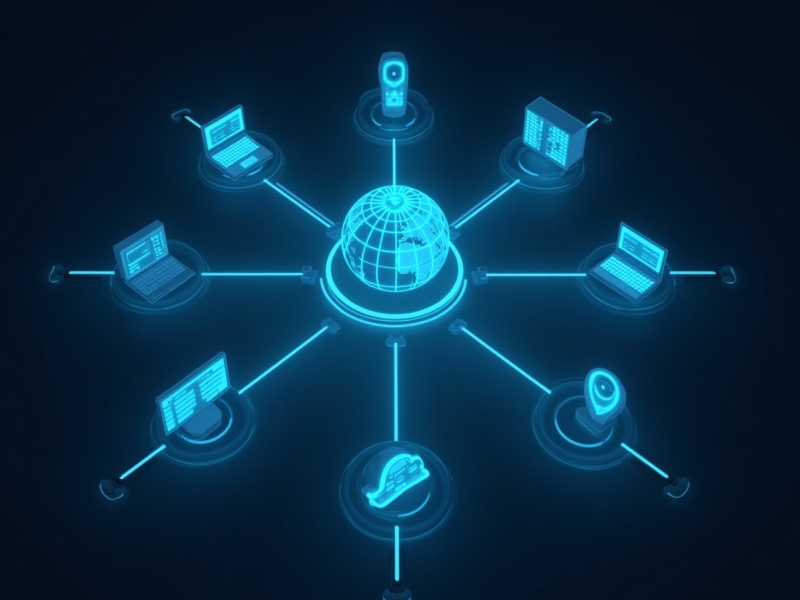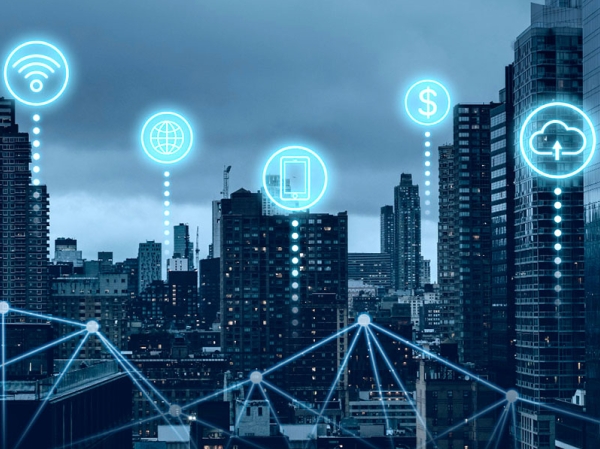Digital transformation has multiplied the demand for stable, secure, and low-latency business connectivity. Computer networks are now a strategic infrastructure that enable communication, cloud access, real-time analytics, and secure remote work, among many other functions.
Made up of interconnected devices, links, and control equipment, networks allow reliable and fast information exchange, improving user communication, business process efficiency, and the availability of real-time digital services.
Why Are Computer Networks Essential?
In most companies, this digital “plumbing” supports almost everything we do: sending emails, syncing inventories, making video calls, or enjoying online entertainment. A well-designed network works in the background and goes unnoticed; when it fails, productivity and user experience are immediately impacted.
The architecture of computer networks has evolved exponentially. If their design, management, and security are not handled by specialized professionals, risks increase significantly—from service outages to cybersecurity breaches capable of compromising sensitive data or even paralyzing business operations.
In this context, studies in Networked Computer Systems Administration, which provide skills in architecture, automation, and cybersecurity, have become one of the careers with the most professional opportunities. The high demand for network and cybersecurity management experts guarantees strong career prospects in strategic sectors such as telecommunications, finance, Industry 4.0, and public administration, where these profiles are among the most valued in the digital economy.
Types of Computer Networks: What They Are and What They’re For
LAN (Local Area Network)
- Definition: A network that connects devices within a limited physical location.
- Use cases: Offices, homes.
- Examples: Connecting PCs and servers, sharing printers, backbone for internal services.
- Challenges: Endpoint security, managing voice and data traffic, IP scalability, and access control.
WAN (Wide Area Network)
- Definition: A large-scale network connecting multiple LANs across long distances. The Internet is the largest WAN.
- Use cases: Corporations with distributed offices, retail chains, connections with public clouds.
- Examples: Branch connections via hybrid MPLS/Internet links; SD-WAN prioritizing SaaS applications.
- Challenges: Latency, reliability, costs, routing policies, and end-to-end encryption.
MAN (Metropolitan Area Network)
- Definition: Larger than a LAN but limited to a city or metropolitan area, usually connecting multiple LANs via a backbone.
- Use cases: Universities, city councils, local operators.
- Examples: Municipal fiber connecting libraries and civic centers; a university campus spread across the city.
- Challenges: Interoperability, link redundancy, efficient traffic management.
WLAN (Wireless LAN)
- Definition: A wireless variant of LAN based on Wi-Fi.
- Use cases: Offices with mobility, retail, logistics, education, public spaces.
- Examples: Roaming between access points; high-density networks in auditoriums; SSID segmentation for employees/guests.
- Challenges: Signal interference, user saturation, channel management, secure authentication.
PAN (Personal Area Network)
- Definition: A short-range network connecting devices around a single user, typically via Bluetooth or USB.
- Use cases: Home and mobile professional settings: wearables, peripherals, medical devices, smartphone pairing.
- Examples: Bluetooth headphones; health sensors synced with a clinical tablet.
- Challenges: Power consumption, secure pairing, radio coexistence with Wi-Fi, personal data privacy.
VPN (Virtual Private Network)
- Definition: A virtual network that creates an encrypted tunnel over the Internet to protect communication.
- Use cases: Remote corporate access, site-to-cloud interconnection, teleworking.
- Examples: Site-to-site VPNs unifying offices; remote access VPN with MFA; controlled split tunneling for SaaS.
- Challenges: Key and policy management, encryption performance, connection auditing.
What Will the Networks of the Future Look Like?
In the coming years, computer networks will become even more essential as the backbone of digital society. AI-driven automation will enable autonomous networks capable of self-configuration and optimization through high-level policies (ZSM). Meanwhile, IoT expansion will multiply nodes and use cases, creating new challenges in system design, scalability, and cybersecurity.
On top of this, the evolution of 5G and the development of 6G will deliver ultra-fast speeds and near-zero latency, crucial for critical applications in healthcare and security. This new era will make professionalization in network administration more important than ever.

















